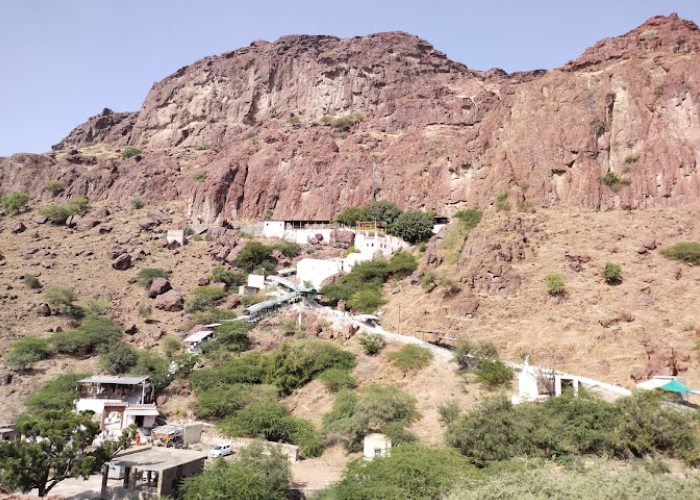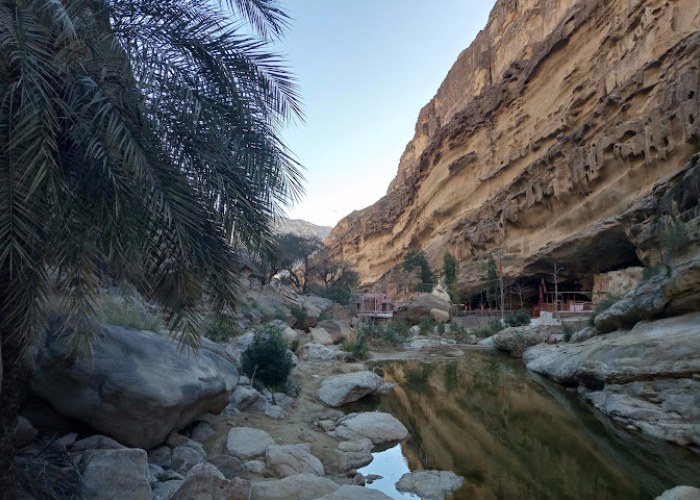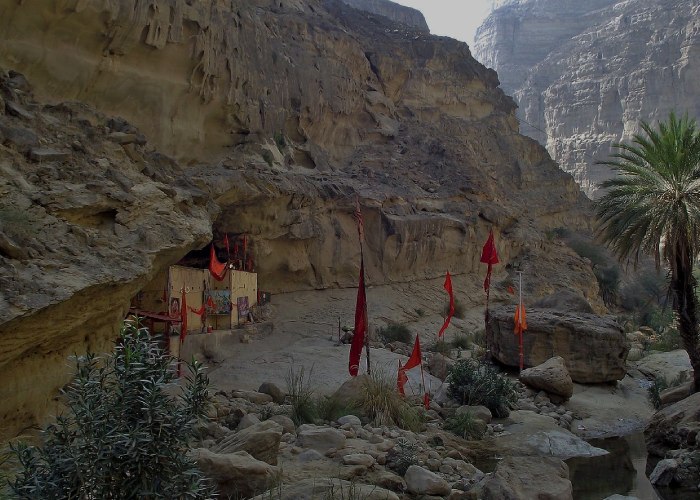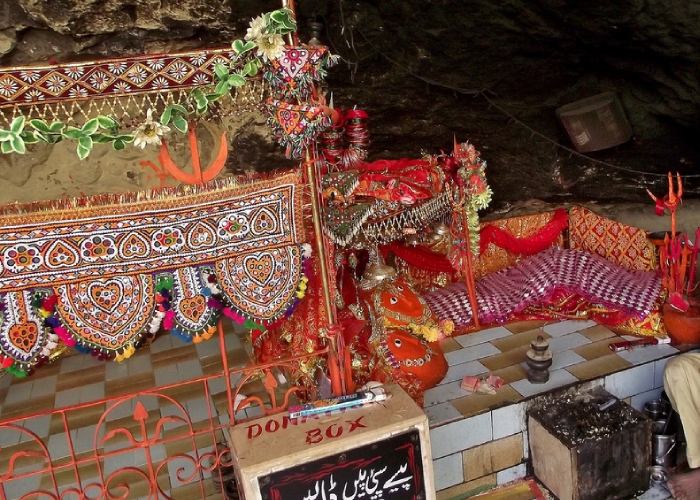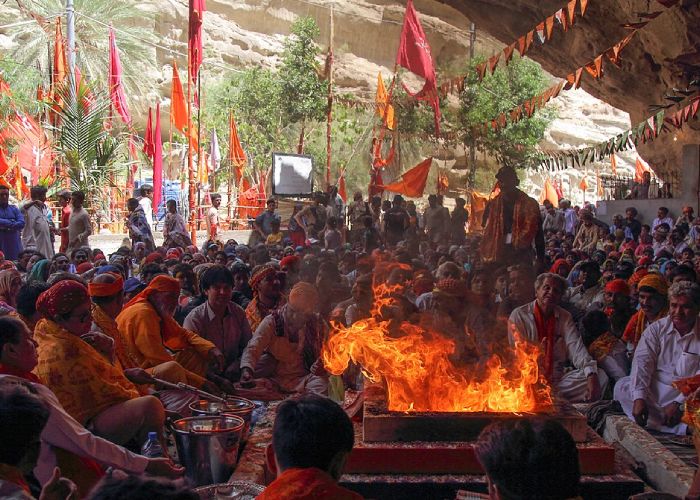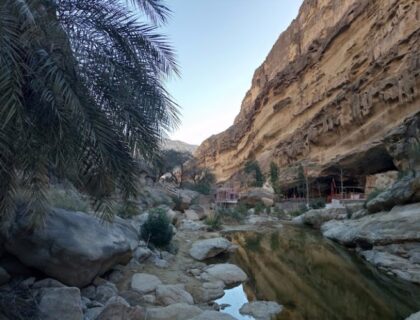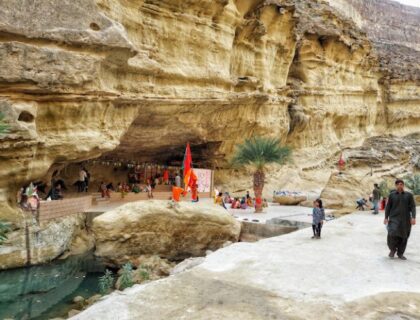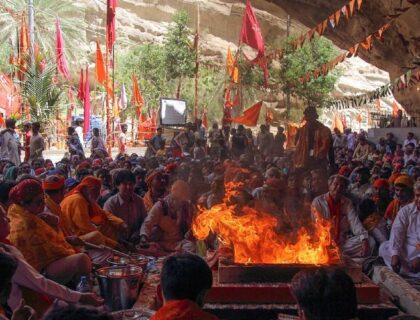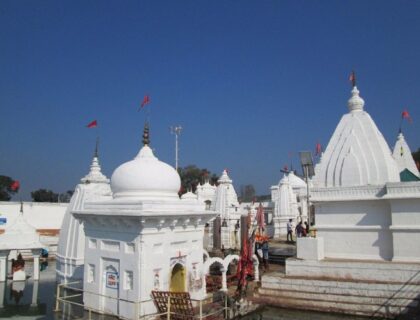Hinglaj Shaktipeeth Baluchistan
Hinglaj Shaktipeeth also known as Hingula Devi and Nani Mandir, is a Hindu temple located in Hinglaj, a town on the Makran coast in the Lasbela district of Baluchistan, and is in the middle of the Hingol National Park. It is one of the 51 Shakti Peethas in the Shaktism denomination of Hinduism. Over the last three decades, the place has gained increasing popularity and become a unifying point of reference for Pakistan’s many Hindu communities.
Hinglaj Yatra is considered Pakistan’s largest Hindu pilgrimage Yatra. More Than 250,000 individuals participate in the Hinglaj Yatra throughout the spring. This sacred Shaktipeeth is located in the Hinglaj area on the Hingol River banks in the Balochistan area of Pakistan, which is 217 kilometres away from Karachi. Most of the journey has to be done through the desert, which is extremely difficult.
Story Behind Hinglaj Shaktipeeth
The goddess of Dakshayani, Sati, Parvati, or Durga, Hinduism’s most important woman and most powerful deity is referred to as Shakti. Durga Devi, Mahakali, and Gowri are the three main manifestations of Shakti, the power goddess. She is Adi Shakti’s avatar.
Sati was the Prajapati Daksha’s daughter, and she married Lord Shiva despite Her father’s wishes. Prajapati Daksha once put together a massive yagya, but he didn’t call his daughter and son-in-law. Sati was very saddened by Her father’s actions. When she got there, her father ignored the Sati and insulted her. She could not bear insult to his husband (Lord Shiva) and she jumped into the fire of Yagya and committed suicide. She passed away, but her body didn’t burn. Lord Shiva had taken His Virabhadra Rupa out of rage. Daksha’s head was cut off by him, but in the end, He forgave him by bringing him back to life.

Lord Shiva, devastated, had taken Sati’s body and wandered the universe. Finally, Lord Vishnu used His Chakra to break the Sati’s body into pieces. Each body part transformed into Shakti Pitha. The temple had emerged where the body part had fallen to the ground. In order to safeguard the Shakti Pitha, Lord Shiva created 51 Bhairava for each one.
Hinglaj Shaktipeeth is the place where the head of the mother fell. Another belief associated with this temple is prevalent. It is said that every night, all the powers assemble at this place and create a rasa, and in the daytime, Hinglaj merges with the mother.
History of Hinglaj Shaktipeeth
Hinglaj Shaktipeeth is famous and old in human history. The devotees from all parts of the world come for Hinglaj Mata Teerath for centuries. Great Saint GuruGorakh Nath, Great Saint Guru Nanak Sahib, Dada Mekhan, Avtar of Laxman, and other great Saints, Rishes and Hindu scholars paid visits to Hinglaj Teerath.

In recent years, devotees from Africa and European countries have visited and performed Hinglaj Mata Teerath. The Baloch community, being predominantly Muslim majority in the current times, believes themselves to be descendants of Hinglaj Mata, who converted to Islam in the later years.
Architecture of Hinglaj Shaktipeeth
The shrine is in a small natural cave. There is a low mud altar. There is no man-made image of the goddess. A small divine form of Hinglaj Mata is worshipped. The stone is smeared with sindoor (vermilion), which possibly gives the location its Sanskrit name Hingula, which is the root of the present-day name Hinglaj.

The cave temple of Hinglaj Mata is in a narrow gorge in the remote, hilly area of Lyari Tehsil in Balochistan. It is 250 kilometres (160 mi) to the northwest, 12 miles (19 km) inland from the Arabian Sea and 80 miles (130 km) to the west of the mouth of the Indus. It is at the end of a range of Kirthar Mountains, in the Makran desert stretch, on the west bank of the Hingol River. The area is under the Hingol National Park.

It is believed that the Hinglaj temple dates back more than 2,000 years. It is not easy to distinguish between Hindus and Muslims here. Muslim caps are also frequently seen on temple priests. Muslims and Hindus share a common devotion to the mother goddess. In this temple, Hindus worship her as a mother, and Muslims refer to her as “Nani’s Hajj.” Darshan is also attended by people from Bangladesh, the United States, and Britain, in addition to Afghans, Egyptians, and Iranians.
Facts about Hinglaj Shaktipeeth
- Sati’s Bhrahmarandhra (top of the head) fell in Hinglaj, around 125 km away from north-east of Karachi. The goddess here is in the form of Shakti Kottari.
- Hinglaj Mata is said to be a very powerful deity who bestows good on all her devotees.
- Hinglaj Shakti Peeth is the most famous and significant pilgrimage amongst devotees according to their religious beliefs. It has also been mentioned in Hinglaj Purana as well as Vamana and many Puranas.
- This sacred Shaktipeeth is located in the Hinglaj area on the banks of the Hingol River in the Balochistan area of Pakistan, which is 217 kilometres away from Karachi.
- Most of the journey has to be done through the desert, which is extremely difficult.
- In this Shaktipeeth, there are visions of Shakti Roop Jyotis. The cave has to go on the strength of hands and feet.
- Muslims call Hingula Devi as ‘Nani Mandir’ and visit there as ‘Nani Ka Haj.’ Muslims from all over Balochistan also worship the Hinglaj Shaktipeeth.
- There is a religious festival held in April every year, in which people come from remote areas, especially Hindus.
- Sufi Muslims also revere Hinglaj Mata. The Sufi saint Shah Abdul Latif Bhittai had visited the Hinglaj Mata temple and it is mentioned in his poetry.
Festivals In Hinglaj Shaktipeeth
- Durga Puja. (Winter) – Devotees celebrate Navaratri at this temple in the month of Ashwin (Sep-Oct).
- Navaratri. (Summer) – They celebrate other Navaratri in the fortnight of the Chaitra (March-April). Every nine days they worship Navadurga (nine Durgas).
- Hinglaj Yatra is the largest Hindu pilgrimage in Pakistan. More than 250,000 people take part in the Hinglaj Yathra during the Navratri.
How to Reach Hinglaj Shaktipeeth
Hinglaj Shaktipeeth is a cave temple. Mata’s Deity form sits in a cave that is built on a high hilly area of Lyari Tehsil in Balochistan. There is a temple of Mata Hinglaj Devi in the mountain cave with no door.
By Air: The nearest international airport is in Karachi. This is at a distance of almost 250 kilometres from Hinglaj Shaktipeeth.
By Railway: The Nearest City is Karachi, you can reach the temple after reaching Karachi.
By Road: There are several buses that connect to Hinglaj. Local and private transport are also available in plenty.
Read More – Jayanti Shaktipeeth Nartiang
Location
Facilities
- Pooja Item Shops
- Prasad Shops

